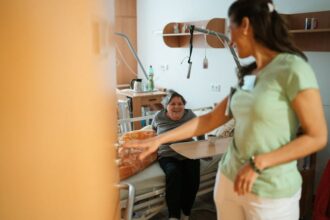A recent study published in the open-access journal PLOS Medicine by Binh Nguyen and colleagues from the University of Sydney, Australia, sheds light on the correlation between consistent adherence to physical activity guidelines and the health-related quality of life in women, particularly during middle age. This study, released on May 2nd, presents findings based on data collected from the Australian Longitudinal Study on Women’s Health, spanning fifteen years from 1996 onwards.
This robust research, encompassing a staggering 11,336 female participants born between 1946 and 1951, meticulously examined the impact of consistently meeting the World Health Organization’s (WHO) physical activity guidelines throughout middle age. These guidelines advocate for a minimum of 150 minutes of physical activity per week. Participants were stratified into groups based on their adherence to these guidelines: those who consistently met them, those who began meeting them at ages 55, 60, or 65, and those who never met them. The study evaluated the participants’ health-related quality of life using the physical health composite score (PCS) and mental health composite score (MCS) derived from the Short Form 36 Health Survey, a comprehensive questionnaire assessing functional health and well-being.
The results revealed that individuals who consistently adhered to the physical activity guidelines and those who started meeting them at age 55 exhibited higher PCS scores compared to those who did not meet the guidelines. Even after adjusting for socioeconomic factors and pre-existing health conditions, the positive impact of physical activity on PCS remained significant. However, the study found no significant association between physical activity and MCS.
The authors emphasised the importance of their findings in promoting an active lifestyle during mid-life, highlighting the cumulative health benefits that can be gained by maintaining or adopting physical activity habits. They stressed that even if women begin to meet the physical activity guidelines in their mid-50s, it can still lead to notable improvements in physical health, particularly regarding physical functioning.
Conclusively, this study underscores the imperative for women to maintain physical activity levels throughout middle age to maximise the long-term benefits for physical health in later life. The authors strongly advocate that women strive to increase their activity levels to meet the guidelines by age 55, thereby optimising their overall health and well-being as they age. These findings are a powerful testament to the transformative potential of physical activity in women’s health during middle age.
More information: Binh Nguyen et al, Physical activity across midlife and health-related quality of life in Australian women: A target trial emulation using a longitudinal cohort, PLoS Medicine. DOI: 10.1371/journal.pmed.1004384
Journal information: PLoS Medicine Provided by PLOS








